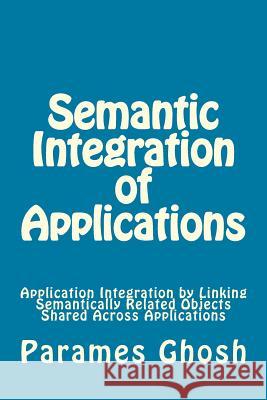Semantic Integration of Applications: Application Integration By Linking Semantically Related Objects Shared Across Applications » książka
Semantic Integration of Applications: Application Integration By Linking Semantically Related Objects Shared Across Applications
ISBN-13: 9781530573752 / Angielski / Miękka / 2016 / 330 str.
Semantic Integration of Applications: Application Integration By Linking Semantically Related Objects Shared Across Applications
ISBN-13: 9781530573752 / Angielski / Miękka / 2016 / 330 str.
(netto: 47,64 VAT: 5%)
Najniższa cena z 30 dni: 49,75
ok. 16-18 dni roboczych
Dostawa w 2026 r.
Darmowa dostawa!
Application integration, addressed in this thesis, is no longer an organisational issue, but a global problem. Organisational boundaries are often redefined with mergers/acquisitions. Customers require services that cannot be provided by a single organisation. Applications from one organisation often need to interact with applications of other organisations; they need to package services that are supplied by other organisations. Organisations can no longer work in isolation. Increase in the need for interoperability of applications has been matched by the increase in the speed and quality of communication. Organisations are now highly interconnected and have access to many information sources, but they still have problems in identifying what data from other organisations are relevant or meaningful to them. In this thesis, we have shown how to link relevant data across applications and model their relationships in the integrating application. A computer application represents real world objects that are relevant to it; again from these objects it selects only the relevant attributes. The same real world object may be modelled in many applications, but different sets of attributes are represented in those applications, because data models support different constructs, designers have different perceptions, or the contexts of the application explain unspecified details. When the real world object represented by one application object is same as the real world object represented by another application object, these application objects are semantically equivalent. When the real world counterparts are related, the application objects are semantically related. We have proposed to link semantically related objects of two or more applications in spite of their schematic differences, and model these objects for an integrating application in terms of the semantic relationships of their real world counterparts. We have further simplified this approach to integrate decentralised application systems by identifying a subset of data items of each involved application. These subsets represent the shared information across the applications. Thus, the integration can be achieved by integrating only the selected subsets of the applications. The traditional approaches are to integrate applications by considering all data items of involved applications; these approaches attempt to understand the semantics of all objects in the distributed complex and hence cannot be easily implemented. In this proposed approach, the subsets of the involved applications are expressed as export objects, which contain the shared information of each involved application for the integrated application. After semantic relationships of the export objects across applications are established, an object-oriented application can integrate the semantically related objects across applications and help the applications inter-operate with one another. Identification of semantic links between the involved export objects facilitates setting up their relationships in the data/object models. The proposed architecture will help us get the best of both worlds - continue using existing applications, at the same time add new technologies for the competitive edge.
Zawartość książki może nie spełniać oczekiwań – reklamacje nie obejmują treści, która mogła nie być redakcyjnie ani merytorycznie opracowana.











